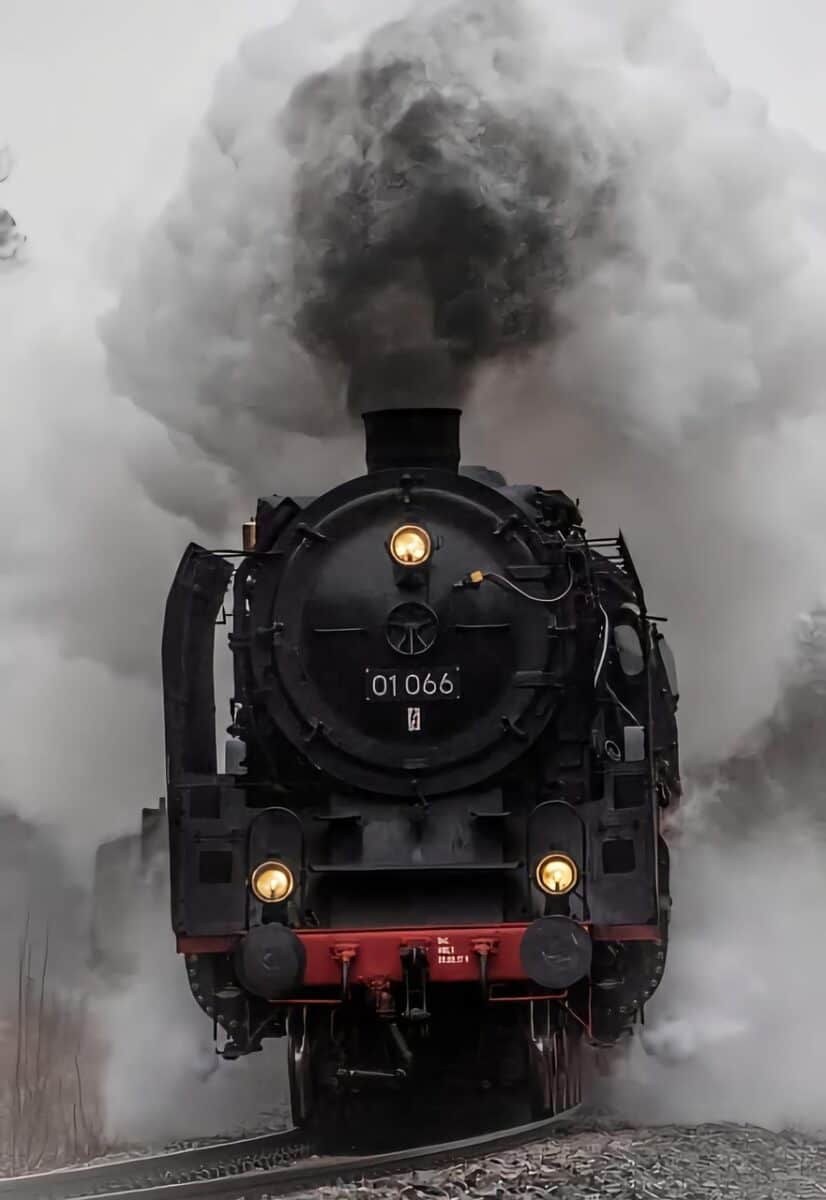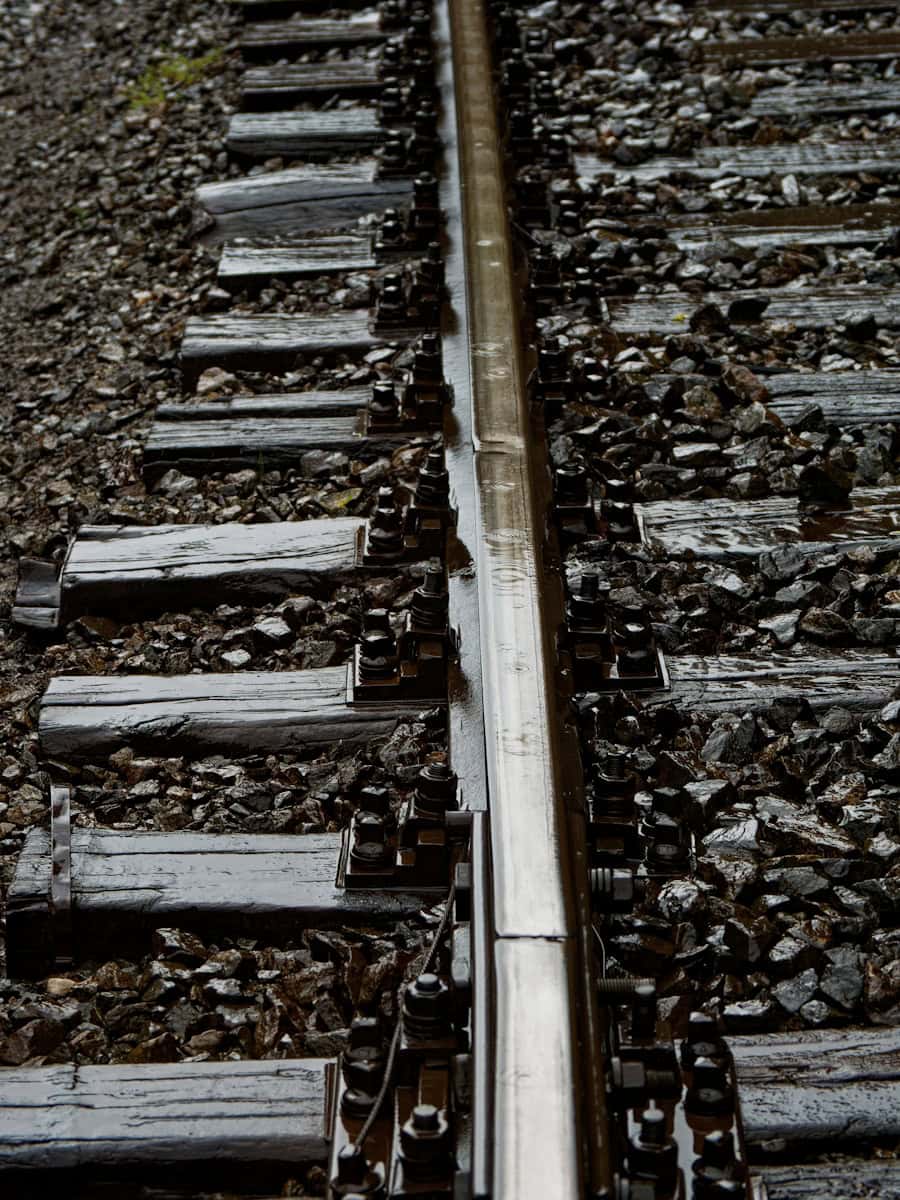The Engineer’s Guide to Track Gauge Adjustment: Understanding the Basics and Best Practices
Introduction: Why Precision Matters
In railway engineering, track gauge is the exact distance between the inner faces of two rails. This measurement is crucial for safety, smooth operations, and keeping both tracks and trains in good condition. The standard gauge used on most of the world’s railways is 1435 mm (4 ft 8.5 in). Even tiny changes from this standard, measured in millimeters, can cause problems like instability, faster wear on parts, speed limits, and in worst cases, train derailments.
Understanding track gauge adjustment is more than just maintenance work; it’s an important technical skill. This guide gives engineers and track workers a complete technical overview. We’ll break down the basic science, identify what causes gauge problems, look at different adjustment methods from manual to automated, and explain the testing processes that ensure long-lasting accuracy and safety on railway networks.
How Wheels and Rails Work Together
To properly manage track gauge, you first need to understand how wheels and rails interact. The system is designed to guide itself, based on how the wheelset is shaped.
The key idea is wheel shape. Railway wheels aren’t flat cylinders; they’re shaped like cut-off cones, with the diameter at the flange being slightly larger than the diameter at the outer edge of the wheel. When a wheelset is perfectly centered on straight track, both wheels roll the same distance. If the wheelset moves sideways, say to the right, the right wheel touches the rail on a larger diameter, while the left wheel touches on a smaller diameter. This makes the right wheel travel farther per turn than the left, naturally steering the wheelset back to center. This self-centering action is essential for stable train operation.
The correct track gauge is the foundation that lets this system work within safe limits. Several forces are constantly working, and the track structure must handle them:
- Vertical Loads: These are the main downward forces from the train’s weight. They pass through the rail, fastening system, sleepers, and ballast into the ground. Wrong gauge can lead to uneven loading, stressing parts unevenly.
- Lateral Forces: These are side-to-side forces. A main source is hunting movement, a natural back-and-forth motion of the wheelset as it finds its center. While normal for cone-shaped wheels, too much hunting caused by wrong gauge or worn surfaces can lead to instability and high wear.
- Centrifugal Force: On curved track, the train’s weight pushes outward. This force is balanced by track banking and the sideways resistance of the track structure, mainly the high rail. Gauge widening commonly results from this force.
- Thermal Forces: Steel rails expand and contract significantly with temperature changes. In continuously welded rail, these forces are huge and must be controlled by the fastening system and sleeper weight. Thermal forces can cause both gauge narrowing and, more seriously, track buckling.
Organizations like the American Railway Engineering and Maintenance-of-Way Association (AREMA) and the International Union of Railways (UIC) set strict tolerance ranges for track gauge, often within a few millimeters of the standard value, to ensure these forces are managed safely.

Understanding Gauge Problems
Track gauge doesn’t stay the same. It changes over time due to operational stress and environmental factors. Finding the root cause of a problem is the first step toward fixing it effectively. Problems are mainly categorized as gauge widening or gauge narrowing.
Causes of Gauge Widening
Gauge widening is the more common problem, where the distance between rails exceeds the allowed tolerance. It’s a gradual failure that reduces the wheel’s self-centering ability and increases the risk of a wheel “dropping in” between the rails.
- Rail and Fastener Wear: On curves, centrifugal force presses the wheel flanges against the gauge face of the high rail. This causes wearing away, gradually reducing the rail head’s size and effectively widening the gauge. At the same time, the sideways forces can cause wear and looseness in fastening parts like clips, spikes, and insulators.
- Sleeper (Tie) Problems: Sleepers are the main parts holding the rails at the correct gauge. In wooden sleepers, moisture can cause rot, especially around spike holes, reducing their ability to resist sideways forces. Spikes can become loose, letting the rail tilt outward. In concrete sleepers, cracking or damage to the built-in shoulder or fastening insert can lead to loss of gauge-holding ability.
- Foundation and Ballast Issues: The ballast layer spreads loads and provides sideways track resistance. When ballast becomes dirty with fine particles (coal dust, dirt, sand), it loses its sharp, interlocking properties and drainage ability. This leads to a “pumping” action under load, track settling, and loss of sideways stability, allowing the entire track section to spread.
Causes of Gauge Narrowing
Gauge narrowing is less common but can be equally dangerous, as it increases the risk of a wheel flange climbing the rail, which can lead directly to derailment.
- Thermal Contraction: In very cold weather, the lengthwise contraction of rails can, in some track and fastener setups, pull inward, leading to slight narrowing of the gauge. However, the bigger thermal risk is buckling from expansion, which can show up as sharp local misalignment that includes gauge narrowing.
- Wrong Installation or Adjustment: Human error during track construction or maintenance is a major cause. Over-driving spikes, incorrectly setting gauge during re-railing, or faulty adjustments by a tamping machine can all create tight gauge conditions.
- Rail Flow/Plastic Deformation: On the low rail of a sharp curve under heavy, slow-moving traffic, the high contact stresses can cause the rail head steel to “flow” or bend permanently toward the gauge side. This build-up of material effectively narrows the gauge and can create a dangerous ramp for the wheel flange.
| Cause | Typical Location | Primary Effect | Consequence if Unchecked |
| Rail Head Wear | High rail in curves | Gauge Widening | Increased hunting, risk of wheel drop-in |
| Sleeper Degradation | Anywhere, esp. wet areas | Gauge Widening | Loss of track stability, fastener failure |
| Ballast Fouling | Anywhere, esp. poor drainage | Gauge Widening/Irregularity | Poor load distribution, accelerated track decay |
| Rail Flow | Low rail in curves | Gauge Narrowing | Increased friction, risk of wheel climb |
| Thermal Expansion | Tangents, CWR sections | Gauge Narrowing (Buckling) | Catastrophic track buckle, derailment |
A Technical Deep Dive
The methods for track gauge adjustment range from basic manual techniques to highly advanced, automated systems. The choice of method depends on the size of the problem, the type of track construction, and available resources.
Manual and Semi-Manual Techniques
For spot repairs, work in tight spaces, or on secondary lines, manual methods are still useful. These techniques rely on physical force and the skill of the track crew.
The process typically involves using a gauge bar, a calibrated bar with a measuring dial, to find the exact location and size of the problem. To fix gauge widening on timber-sleepered track, the crew uses claw bars to pull the spikes on the field side of one rail. They then use heavy crowbars, or a hydraulic rail spreader/puller, to lever the rail inward to the correct gauge. New spikes are then driven into fresh holes.
From experience, this process requires good judgment. Getting accuracy within millimeters with a crowbar is challenging and physically demanding. The “feel” for how much the rail will spring back after the force is released is learned over time. An important best practice is to use a staggered pattern when re-spiking; pulling and re-driving all the spikes on several consecutive sleepers creates a weak point in the track section. By staggering the work, the sideways resistance of the track is better maintained.
Mechanized Tamping Adjustment
For mainline maintenance, efficiency and precision require mechanization. Modern tamping machines, such as those from Plasser & Theurer or Harsco, are multi-function platforms that combine lifting, lining, tamping, and gauge adjustment into a single, automated process.
The gauge adjustment capability of these machines is an impressive example of engineering. The system works on a closed-loop control principle:
- Measurement: A forward-mounted measuring frame, often equipped with laser or optical non-contact sensors, travels ahead of the main work unit. It precisely measures the existing track geometry, including the gauge at every sleeper.
- Computation: This data is fed to an onboard computer system. The computer compares the measured gauge against the design geometry file for that specific track section, calculating the exact correction needed.
- Action: As the main part of the tamper arrives at the sleeper, a set of hydraulic cylinders and roller clamps grab the rails. Guided by the computer’s calculations, the hydraulic system applies a precise sideways force, pushing or pulling the rails into the target gauge position.
- Securing: While the rails are held firmly in this corrected position, the tamping units engage. Their vibrating tines go into the ballast on either side of the sleeper and compact it tightly underneath, locking the sleeper—and thus the track gauge—into its new, correct position.
This integrated, automated approach provides a level of precision and consistency that can’t be achieved through manual methods, ensuring compliance with the tight tolerances required for high-speed operation.

A Different Solution: VGA
While most of this discussion focuses on adjusting the track to fit the train, an alternative engineering approach adjusts the train to fit the track. This is the area of Variable Gauge Axles (VGA), also known as gauge-changeable wheelsets. These systems are a forward-thinking solution to a different kind of gauge problem: operating a single train across networks with different track gauges. This is a common requirement in Europe, for example, at the border between Spain (1668 mm gauge) and France (1435 mm gauge).
The main engineering challenge is to design a wheelset that can be securely locked at one gauge for safe operation, then unlocked, moved to a new gauge, and re-locked with complete reliability. The process happens at a special trackside installation known as a gauge changer. As the train moves slowly through it, guide rails engage the wheels. An unlocking mechanism on the axle is activated, allowing the wheels to slide sideways along the axle shaft until they reach the new gauge, at which point a locking mechanism re-engages.
Several competing designs have been developed, each with a different approach to the critical locking mechanism.
| System Name | Country of Origin | Locking Mechanism | Key Feature |
| Talgo RD | Spain | Mechanical Bolts/Pins | Passive, relies on trackside ramps; proven and widely used in passenger service. |
| SUW 2000 | Poland | Central Locking Sleeve | Can be used on freight wagons; robust design suited for heavier axle loads. |
| DBAG/Rafill Type V | Germany | Form-locking bayonet system | Designed for high-speed operation; complex but offers high precision and redundancy. |
VGA technology shows a complete approach to the “gauge problem,” demonstrating how innovative vehicle engineering can provide solutions that complement traditional track maintenance and adjustment.
Checking and Quality Control
Track gauge adjustment is incomplete without a thorough checking process. Correcting the gauge is only half the job; confirming that the correction is accurate, stable, and meets standards is essential for ensuring safety and getting the benefits of the work. Quality control relies on different measurement technologies.
The choice of tool depends on the context of the work. A small crew doing a manual spot repair will use a different tool than a major infrastructure manager checking the condition of a hundred-kilometer corridor.
| Tool / Technology | Cómo funciona | Precision | Use Case |
| Manual Gauge (Trolley) | Mechanical bar with a dial/digital reader | ~0.5 mm | Spot checks, immediate post-adjustment verification, small-scale work. |
| Optical Non-Contact Systems | Laser or camera-based measurement | ~0.1 – 0.3 mm | Mounted on tamping machines for real-time control or on dedicated recording vehicles. |
| Inertial Measurement Unit (IMU) | Accelerometers and gyroscopes on a trolley/vehicle | ~1 mm (relative accuracy) | Continuous geometry recording over long distances; estimates gauge from vehicle movement. |
After an adjustment, a manual trolley is the first line of checking, confirming the immediate result of the work. For larger projects done by a tamper, the machine’s own recording system provides a detailed post-work report. On a network level, dedicated track geometry recording vehicles run regularly, using optical and/or inertial systems to create a comprehensive, continuous record of the track condition. This data is not just for immediate quality control; it’s crucial for trend analysis. By tracking the rate of gauge degradation over time, engineers can move from a reactive to a predictive maintenance strategy, scheduling adjustments before safety or performance limits are reached.

Bringing It All Together
The journey from the basic physics of a cone-shaped wheel on steel rails to the complex mechanics of a modern tamping machine reveals an important truth: track gauge adjustment is a precise engineering discipline. It’s a constant balancing act, managing the huge forces of multi-ton trains and thermal expansion with millimeter-level accuracy.
We have seen that a systematic approach is essential. This involves understanding the root causes of deviation—whether it’s wear, material degradation, or ballast failure—and selecting the right corrective method. Whether through the skilled use of manual tools or the deployment of automated systems, the goal is the same: to restore the track to its design geometry. This work is then validated through careful measurement and quality control.
Ultimately, a forward-thinking and technically sound approach to track gauge maintenance is not an expense but an investment. It’s fundamental to creating and maintaining a safe, reliable, and efficient railway network.
- AREMA – American Railway Engineering and Maintenance-of-Way Association https://www.arema.org/
- International Union of Railways (UIC) https://uic.org/
- Federal Railroad Administration (FRA) https://railroads.dot.gov/
- ASTM International – Railway Testing Standards https://www.astm.org/
- ISO - Organización Internacional de Normalización https://www.iso.org/
- Institute of Railway Research – University of Huddersfield https://www.hud.ac.uk/research/institutes/irr/
- Railway Supply Institute (RSI) https://www.rsiweb.org/
- ASME - Sociedad Americana de Ingenieros Mecánicos https://www.asme.org/
- Transportation Research Board (TRB) https://www.trb.org/
- Association of American Railroads (AAR) https://www.aar.org/




